Water carrying methods on the trail
Many times, carrying water while backpacking or hiking is vital; and not just 12 oz until the next water hole, but as much as a gallon at a time between water points. When backpacking, there is also the need for water while camping: cooking, cleaning, hygiene, etc, all require water; and camping near a water source is not always recommended. The need to carry water brings up the question of how to do it? Hard bottles? Collapsible bottles? Hydration bladders? Or even just the regular old soda bottle? All are options, but which is best?
As always, the answer depends on your needs, the conditions and your hiking style.
Bottles
Bottles are probably the most commonly used form of carrying water and they vary wildly in weight, durability and cost. For the sake of convenience, we will compare the same volume item across all options: 34oz, or 1 liter.
Hard bottles
Hard bottles are durable, robust and easy to use in a variety of situations; they will stay up when placed on the ground (usually) and are pretty easy to fill in any situation.
On the other hand, hard bottles are heavy, keep taking up space even when empty and are pretty cumbersome most of the time. They also tend to be on the pricier side.
Common materials: low/high-density polyethylene, aluminum, copolyester, stainless steel.
Popular brands: Nalgene, Sigg, Klean Kanteen, Camelback, Polar, Hydroflask.
Collapsible bottles
Collapsible bottles are the modern take on the classic goat stomach bladder: light, efficient and simple to use. They take no space at all in your backpack when empty (when well made), are lightweight and pretty affordable.
Collapsible bottles do have an issue with easy filling and durability. When trying to be filled from a standing water source they tend to be a challenge to fill: they keep on collapsing instead of "sucking" the water in like hard bottles. This is why we developed The Vecto which comes with a wide opening on one side and a simple bottle cap on the other - gone are the days of hard filling.
Common materials: Polyethylene (PT), Polypropylene (Polypro), Polyethylene vinyl acetate (PEVA), Thermoplastic polyurethane (TPU).
Popular brands: Platypus, Evernew, Vapur.
Disposable bottles
The ultimate deal in price and weight: disposable water, soda and energy-drink bottles are the ultralighter's basic item for water carrying. Disposable bottles have suffered from a round of bad press, but the UL community has re-adopted them as a hard bottle (see above) replacement, especially the premium, 1 liter "Smart Water" bottles.
These bottles sit in a good place between hard and collapsible bottles but are the least durable. On the other hand, who cares? They are cheap and recyclable - just replace it.
Material: Polyethylene terephthalate (PET plastic).
Hydration bladders
Hydration bladders are a great idea for fast movers who need to keep their hands free or for people who have a hard time drinking large volumes of water at one time. Hydration bladders can fit very comfortably in backpacks or dedicated packs, allowing them to be very close to the spine for maximum weight carrying comfort. Light material means you can get pretty light containers while staying relatively safe stashed in your backpack.
On the other hand, if you have a problem regulating your water intake, having a stowed away water container might be an issue. The biggest limitation for hydration bladders is filling them up, especially in the backcountry where a tap is not there to easily just fill up the bladder, leading to some very awkward moments struggling with streams.
Hydration bladders are made of two parts: the water bladder that is very similar to a collapsible bottle, but has two openings: a top lid for water filling and bottom opening to attach the hose. The second part is the hose - it allows for water to be "sucked" through the mouthpiece without taking the hydration off your back, minimizing the amount of energy it takes to drink on the go.
Common materials: Polyethylene (PT), Polyethylene vinyl acetate (PEVA), Thermoplastic polyurethane (TPU), Nylon.
Popular brands: Camelbak, Platypus, Geigerigg, Hydrapak.
Hybrid solution
If you can't decide on one of the above solution, you can always seek a container that will combine several features. There are many offers now of semi-rigid container that will collapse to some level and will stay mostly rigid when full.
On the other hand, a combination of a collapsible container or water bottle with a hydration tube is nothing new. You can pretty easily make any bottle and water container that comes with a standard screw cap (28mm) into a hydration bladder.
Not carrying
The last option is to not carry any water with you. This is a viable plan where water is abundant and clean, like Scotland, Patagonia, the Pacific Northwest in the US etc. In those areas you can just sip casually every time you get to a water source, keeping you nicely hydrated.
In areas where the water supply is not always drinkable but water sources are abundant, you can carry a simple "from source" filter like the Lifestraw Personal Water Filter, Sawyer Mini or Squeeze Filter System, etc. The idea here is to filter water directly from the water source, filtering as much as you need to hydrate and nothing beyond.
Last word about BPA
BPA (Bisphenol A) is a chemical stabilizer used in hard plastics (mainly polycarbonate), among them bottles, and was found to mimic the presence of estrogen in the human body. Concerns have been raised about the presence of BPA in food and water containers, as it is a hard soluble in heat and with water.
In 2008 the FDA looked into the concerns relating to BPA in food grade polycarbonate and since then most outdoor gear producers have moved to BPA-free materials. Any water container you choose to buy should hold a certificate by the FDA or EFSA proving they are using BPA-free materials.
In any case, you can probably trust most reputable brands, and if you are not sure, just ask...


















I love my cnoc vecto for filtering water. My camelback with a sawyer adapter kit added, allows me to refill bladder without removing from my pack! Add a smart bottle for electrolyte mixes and I’m a happy camper 🏕
Hi Bob, the best solution that we know of (and use) is the Sawyer Squeeze with the Sawyer Coupling, that creates a good flow system the allows working with two collapsible containers like the Vecto.
Hi, I’m looking to the filter water method. Most of my hiking/camping has nearby water sources that may be questionable. I’m looking for a filtration system that will fit between the two CNOC water bags I have (one designated Dirty, one clean). Any suggestions on Filters that have twin 28mm openings?
Bob
Leave a comment